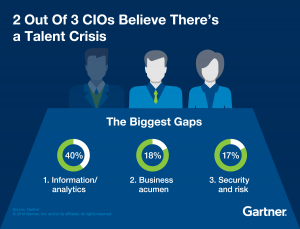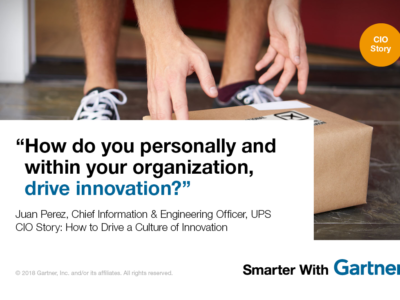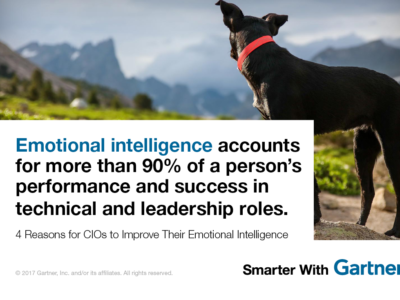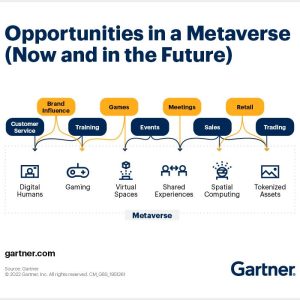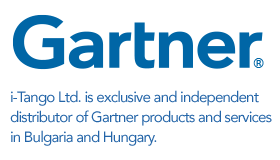CIOs cite talent as the top barrier to success. Learn creative ways to build a talent platform to solve the problem.
Contributor: Jo Bennett
What if, instead of assigning your IT staff to projects, you offered those employees the freedom to choose their projects and managers?
Baidu, a Chinese Web services company, adopted this creative approach with its high-performing technical staff when facing a big challenge that many CIOs grapple with today: You need talented employees to drive business innovation, but attracting, unlocking and retaining the talent that’s right for your business usually isn’t easy.
“As digitalization takes hold, it will become harder for all businesses to find the talent that will be needed to compete in the digital era arena,” said Graham P. Waller, research vice president.
The numbers behind the talent crisis
In the 2016 Gartner CIO Agenda Survey, 66% of CIOs said they believe that there’s a scarcity of talent, and it’s approaching “crisis” proportions. They ranked talent the No. 1 barrier to achieving their objectives. (The No. 3 barrier cited was culture, an issue that goes hand-in-hand with talent.)
Information/analytics appear on 40% of CIOs’ “most wanted” lists.
The gap between enterprises’ needs and capabilities is more acute in some functional areas than in others. With so many businesses focused on big datain recent years, for example, it’s little surprise that information/analytics — expertise to help identify insights and opportunities — appears on 40% of CIOs’ “most wanted” lists.
The second- and third-biggest gaps, business knowledge/acumen and security/risk, were far less universal pain points for CIOs. Each was cited as a problem for fewer than 20% of respondents.
Thinking outside traditional business structures
Digital business is about casting aside traditional roadmaps and rigid organization charts, or accepting the risk of missing out on opportunities. Leading CIOs are tapping into resources that reside in other parts of the business and outside the enterprise — including bold moves such as investing more in crowdsourcing or co-creating solutions with customers. Likewise, many are approaching talent as a platform that has semiporous boundaries.
Jim Wang, Baidu’s senior vice president in charge of technology, understands this. His approach has been to break down barriers that might discourage high-level technical talent from seeking out their best fit and challenges in the organization. Empowering employees to pursue their potential has helped Baidu improve communication (between both teams and individuals), productivity and innovation capabilities.
How to build your talent platform
The 2016 Gartner CIO Agenda Survey shows that many enterprises have not been as proactive as Baidu in addressing the talent challenge. When we asked CIOs what steps they are taking to innovate in talent management, 47% of self-reported “digital laggards” said they aren’t taking any.
Digital business talent might be scarce, but ideas to best develop and leverage what’s out there is not. One of your resolutions for 2016 could be to create a talent platform plan detailing inventory, future state and a gap analysis. Some platform-inspired initiatives you could consider include:
- Seeking talent from the rest of the business by establishing mutually beneficial developmental and rotational plans
- Tapping relationships with educational institutions for more internships and junior hires, and research partnerships focused on key digital era capabilities
- Considering acquisitions of small tech companies as a way of capturing talent (“techquisitions”)
- Unlocking innovation across the business via bimodal delivery, including co-located multidisciplinary teams.
Mr. Waller pointed out that implementing all the ideas for building the talent platform all at once probably isn’t feasible. “The critical thing is to first commit as a leader to making talent a priority, and then taking action to develop culture, skills and enterprise agility,” he advised.
View the complimentary webinar, 2016 CIO Agenda: Building the Digital Platform.
Gartner clients can read more in the report Building the Digital Platform: The 2016 CIO Agenda.
For more news on CIO surveys and reports visit Smarter With Gartner website.


